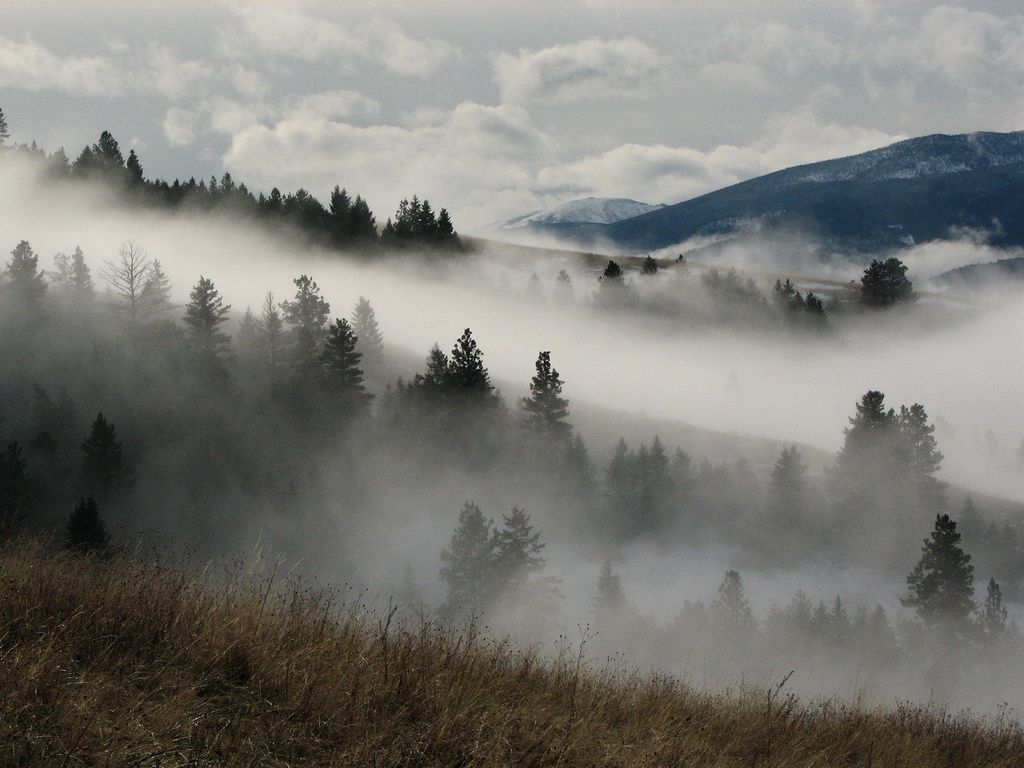Orographic lifting is one of nature’s most fascinating atmospheric phenomena, shaping weather patterns and cloud formations across mountainous regions worldwide. This powerful meteorological process influences precipitation, aviation, and ecosystems in ways that continue to captivate scientists and weather enthusiasts alike.
🏔️ Understanding the Fundamentals of Orographic Lifting
Orographic lifting occurs when air masses encounter topographical barriers such as mountains, hills, or elevated terrain. As the air is forced upward along the windward slopes, it undergoes a remarkable transformation that creates distinctive weather patterns and cloud formations. This vertical displacement of air is not merely a simple upward movement but a complex interaction involving temperature, pressure, and moisture variables.
The process begins when prevailing winds carry moisture-laden air toward elevated terrain. Unable to pass through the solid barrier, the air mass has no choice but to ascend. As it rises, the air expands due to decreasing atmospheric pressure at higher altitudes. This expansion causes the air to cool at a predictable rate known as the adiabatic lapse rate, approximately 9.8 degrees Celsius per kilometer for dry air.
When the rising air cools to its dew point temperature, water vapor begins to condense into visible water droplets or ice crystals, forming clouds. This condensation releases latent heat, which slightly slows the cooling rate, creating what meteorologists call the saturated adiabatic lapse rate. The result is often spectacular cloud formations that cling to mountain slopes or cap mountain peaks.
The Science Behind Cloud Formation in Mountain Regions
Cloud formation through orographic lifting follows predictable patterns that vary based on several atmospheric conditions. The stability of the approaching air mass plays a crucial role in determining the type and extent of cloud development. Stable air tends to produce stratiform clouds with smooth, layered appearances, while unstable air can generate towering cumulus clouds with significant vertical development.
The moisture content of the incoming air mass directly affects precipitation potential. Maritime air masses, having traveled over oceans or large water bodies, typically carry abundant moisture. When these air masses encounter coastal mountain ranges, the orographic lifting can produce substantial rainfall or snowfall on the windward slopes. This phenomenon explains why some coastal mountain regions receive exceptional precipitation totals annually.
Temperature Inversions and Their Impact
Temperature inversions can significantly modify orographic lifting effects. When a layer of warm air sits above cooler air near the surface, it can act as a lid, preventing the rising air from reaching higher altitudes. This can result in cloud formations that are confined to lower elevations, creating distinctive stratocumulus decks that blanket valleys while leaving higher peaks clear.
The interaction between orographic lifting and temperature inversions creates microclimates that support unique ecosystems. Cloud forests, found in tropical and subtropical mountain regions, thrive in the persistent moisture provided by orographically-induced clouds that form below inversion layers. These ecosystems host extraordinary biodiversity and endemic species found nowhere else on Earth.
⛰️ Regional Variations and Global Examples
Orographic lifting manifests differently across various geographical locations, creating distinctive weather patterns that define regional climates. The western coasts of continents, where prevailing westerly winds carry moisture-laden maritime air masses toward mountain ranges, showcase some of the most dramatic examples of this phenomenon.
The Pacific Northwest of North America provides a textbook example. The Olympic Mountains in Washington State receive over 3,600 millimeters of precipitation annually on their western slopes due to orographic lifting of Pacific air masses. Meanwhile, locations just 50 kilometers to the east, in the “rain shadow,” may receive less than 500 millimeters annually.
The European Alps Experience
The Alps demonstrate orographic lifting on a grand scale. When moist Mediterranean air encounters the southern slopes, it produces heavy precipitation and spectacular cloud formations. The northern slopes experience different patterns when Atlantic air masses arrive, creating complex weather systems that vary dramatically over short distances. This variability has influenced human settlement patterns, agricultural practices, and tourism industries for centuries.
New Zealand’s Southern Alps present another compelling case study. The prevailing westerly winds from the Tasman Sea deliver moisture-rich air that rises dramatically over the mountain range. The West Coast receives some of the highest rainfall totals in the world, while Canterbury Plains on the eastern side remain relatively dry. This extreme contrast occurs within a horizontal distance of less than 100 kilometers.
Aviation Considerations and Mountain Wave Phenomena
Pilots and aviation meteorologists must thoroughly understand orographic lifting due to its significant impact on flight safety and efficiency. Mountain waves, a related phenomenon, occur when stable air flows over mountain ranges, creating oscillating wave patterns downwind of the peaks. These waves can extend vertically for thousands of meters and horizontally for hundreds of kilometers.
The updrafts on the windward side of mountains can be beneficial for glider pilots seeking to gain altitude, but they also present hazards. Turbulence in and around orographic clouds can be severe, particularly in lenticular clouds—those distinctive lens-shaped formations that hover downwind of mountain peaks. These stationary clouds mark areas of strong vertical motion and potential turbulence.
Navigating Orographic Challenges ✈️
Commercial aviation routes often avoid areas prone to severe orographic effects, but this isn’t always possible. Pilots must be trained to recognize signs of mountain wave activity, including lenticular clouds, rotor clouds at lower levels, and cap clouds that envelope mountain peaks. Weather forecasting technology now provides detailed information about expected orographic lifting intensity, helping pilots make informed decisions.
The downslope side of mountains can produce powerful downdrafts as air descends and warms. These katabatic winds can reach significant speeds and create hazardous conditions for aircraft during approach and landing. Airports located near mountainous terrain require specialized procedures and experienced pilots familiar with local orographic conditions.
Precipitation Patterns and Hydrological Impacts
Orographic precipitation profoundly influences water resource distribution across mountainous regions. The enhanced precipitation on windward slopes feeds rivers, replenishes groundwater, and sustains ecosystems dependent on reliable water supplies. This natural water tower effect makes mountains critical for downstream communities, agriculture, and industries.
Snowpack accumulation in mountains subject to orographic lifting serves as a natural reservoir, storing winter precipitation and releasing it gradually during warmer months. This timing mechanism is crucial for regions experiencing dry summers, as the delayed runoff provides water when precipitation is scarce. Climate change impacts on orographic precipitation patterns threaten this vital water storage system.
Rain Shadow Deserts and Dry Zones
The leeward side of mountain ranges tells a different story. After releasing moisture on windward slopes, descending air warms and dries, creating rain shadow effects. These dry zones can be remarkably arid, sometimes supporting desert ecosystems despite proximity to wet windward slopes. The Atacama Desert in Chile, Death Valley in California, and the Patagonian Desert all owe their existence partly to rain shadow effects.
Understanding these precipitation patterns is essential for water resource management, urban planning, and agricultural development. Communities on opposite sides of mountain ranges may experience vastly different climate conditions, requiring tailored approaches to infrastructure, crop selection, and water conservation strategies.
🌡️ Climate Change Implications for Orographic Systems
Rising global temperatures are altering orographic lifting dynamics in complex ways. Warmer air can hold more moisture, potentially intensifying precipitation on windward slopes. However, rising snowlines mean that more precipitation falls as rain rather than snow, affecting seasonal water storage and increasing flood risks during winter months.
Mountain glaciers, maintained partly by orographic snowfall, are retreating worldwide. These glaciers provide critical water supplies during dry seasons, and their loss threatens water security for millions of people. The feedback loops between glacier retreat, altered albedo, and local climate patterns create cascading effects that extend beyond immediate mountain regions.
Ecosystem Adaptations and Vulnerabilities
Mountain ecosystems shaped by orographic precipitation face unprecedented challenges. Cloud forests dependent on persistent moisture from orographic clouds are particularly vulnerable to shifts in cloud base heights and precipitation patterns. Species adapted to narrow elevation bands may find their optimal climate zones shifting upslope, potentially running out of suitable habitat.
Alpine vegetation communities experience extended growing seasons but also face increased drought stress as snowpack diminishes. The timing of snowmelt affects plant phenology, pollinator availability, and food web dynamics. These changes ripple through entire ecosystems, affecting biodiversity and ecosystem services that human communities depend upon.
Forecasting and Monitoring Orographic Events
Modern meteorology employs sophisticated tools to predict and monitor orographic lifting effects. High-resolution numerical weather prediction models can simulate airflow over complex terrain, forecasting cloud formation, precipitation amounts, and potential hazards. These models incorporate topographical data, atmospheric soundings, and satellite observations to generate detailed forecasts.
Weather radar systems specifically designed for mountainous terrain help meteorologists track precipitation patterns and intensity. Dual-polarization radar technology can distinguish between rain, snow, and ice, providing valuable information about precipitation type at different elevations. This technology improves flood forecasting and avalanche risk assessment in mountain regions.
Citizen Science and Local Knowledge 📱
Weather enthusiasts and mountain communities contribute valuable observations that complement official monitoring networks. Ground-based reports of cloud formations, precipitation, and wind conditions help validate forecast models and identify localized phenomena that automated systems might miss. Mobile weather applications increasingly incorporate crowdsourced data, improving forecast accuracy for specific locations.
Indigenous communities and long-term mountain residents possess deep knowledge of local orographic patterns accumulated over generations. This traditional ecological knowledge recognizes subtle signs of weather changes and understands seasonal patterns that modern science is only beginning to quantify. Integrating traditional knowledge with scientific monitoring creates more robust understanding of mountain weather systems.
Harnessing Orographic Power for Renewable Energy
The predictable wind patterns associated with orographic lifting present opportunities for renewable energy generation. Wind farms strategically located to capture orographic winds can generate substantial electricity. However, site selection requires careful consideration of turbulence, icing conditions, and environmental impacts on bird migration routes and mountain ecosystems.
Hydroelectric power generation in mountainous regions depends directly on orographic precipitation. The concentrated runoff from mountain watersheds provides reliable energy sources for many regions. Managing these water resources sustainably requires balancing energy production, downstream water needs, ecosystem health, and recreational uses.
🎿 Recreation and Tourism in Orographic Zones
Orographic lifting creates the conditions that support winter sports industries worth billions annually. Ski resorts depend on orographic snowfall to maintain adequate snow cover throughout the season. Understanding local orographic patterns helps resort operators make decisions about snowmaking infrastructure, terrain development, and season timing.
Summer mountain tourism benefits from orographic effects that create dramatic cloudscapes, waterfalls fed by orographic precipitation, and lush vegetation. However, rapidly changing mountain weather poses safety challenges for hikers, climbers, and mountain bikers. Education about orographic weather patterns is essential for outdoor recreation safety.
Photography and Atmospheric Phenomena
Mountain photographers seek out orographic clouds for their dramatic visual appeal. Lenticular clouds, banner clouds streaming from peaks, and low-level cloud seas filling valleys create stunning imagery. Understanding when and where these formations occur allows photographers to capture spectacular images that showcase nature’s atmospheric artistry.
Time-lapse photography reveals the dynamic nature of orographic lifting, showing clouds forming on windward slopes, flowing over peaks, and dissipating on leeward sides. These visualizations help communicate the continuous, flowing nature of atmospheric processes to broader audiences, making complex meteorology accessible and engaging.
Looking Ahead: Future Research and Applications
Advancing technology continues to deepen our understanding of orographic lifting. Unmanned aerial vehicles equipped with atmospheric sensors can sample conditions within orographic clouds, providing data previously difficult to obtain. These measurements improve model validation and reveal fine-scale processes that influence cloud microphysics and precipitation efficiency.
Artificial intelligence and machine learning applications are beginning to identify patterns in orographic weather systems that traditional analysis methods might overlook. These tools can process vast datasets from satellites, radar, surface stations, and model outputs to improve short-term forecasts and understand long-term climate trends in mountainous regions.
The intersection of orographic lifting with other atmospheric phenomena remains an active research frontier. Interactions between orographic effects and atmospheric rivers, tropical systems, or frontal boundaries can produce extreme precipitation events. Understanding these compound events is crucial for improving hazard warnings and preparing communities for intense weather.
🌍 Global Significance of Mountain Meteorology
Mountains cover approximately 24 percent of Earth’s land surface and directly influence weather and climate for a much larger area. Orographic lifting in these regions affects global circulation patterns, moisture transport, and regional climate zones. The water resources generated through orographic precipitation support roughly half of humanity, making mountain meteorology a critical field with global implications.
As populations grow and climate changes, understanding and predicting orographic effects becomes increasingly important for water security, disaster preparedness, ecosystem conservation, and sustainable development. The power of formation through orographic lifting extends far beyond the visible clouds clinging to mountain slopes—it shapes landscapes, sustains life, and connects atmospheric processes across continents.
From the snow-capped peaks of the Himalayas to the cloud-shrouded slopes of the Andes, orographic lifting demonstrates the profound influence of topography on our atmosphere. This natural phenomenon reminds us that Earth’s systems are interconnected, with mountains serving as both barriers and bridges between different climate zones. By continuing to study, monitor, and respect these powerful atmospheric processes, we gain insights essential for navigating an uncertain climatic future while appreciating the spectacular beauty that mountains bring to our world.
Toni Santos is a visual storyteller and artisan whose creations celebrate the poetry of the natural world. Through his thoughtful artistic lens, Toni captures the elegance of botanical forms, transforming them into meaningful expressions of symbolism, resilience, and timeless beauty.
His journey is deeply rooted in a passion for flora and the mysteries they carry. From the shape of a petal to the curve of a vine, each design Toni brings to life reflects a deeper narrative — one of growth, transformation, and harmony with nature. Whether crafting symbolic floral jewelry, enchanted botanical illustrations, or seasonal visual studies, Toni’s work evokes the quiet magic found in Earth’s most delicate details.
With a background in handcrafted artistry and visual design, Toni blends technique with intention. His creations do more than decorate — they speak, often inspired by ancient meanings behind flowers, the cycles of the seasons, and the invisible bonds between nature and spirit.
As the creative voice behind Vizovex, Toni shares this botanical journey with the world, offering curated stories, handcrafted collections, and thoughtful articles that help others reconnect with nature’s symbolism and artistic essence.
His work is a tribute to:
The quiet power of flowers and their messages
The art of visual symbolism in everyday life
The beauty of slowing down to see what’s hidden in plain sight
Whether you’re an artist, a nature lover, or someone drawn to the deeper meanings behind the natural world, Toni welcomes you to explore a space where aesthetics meet soul — one petal, one story, one creation at a time.





